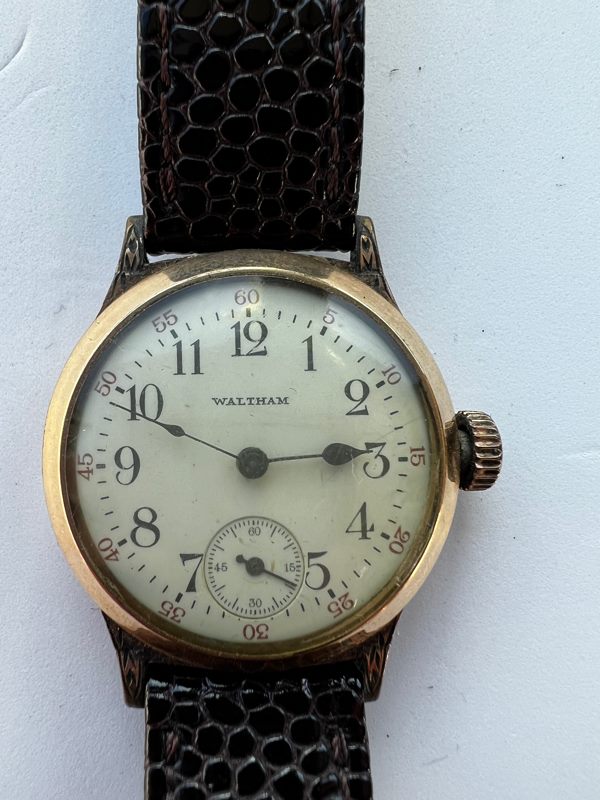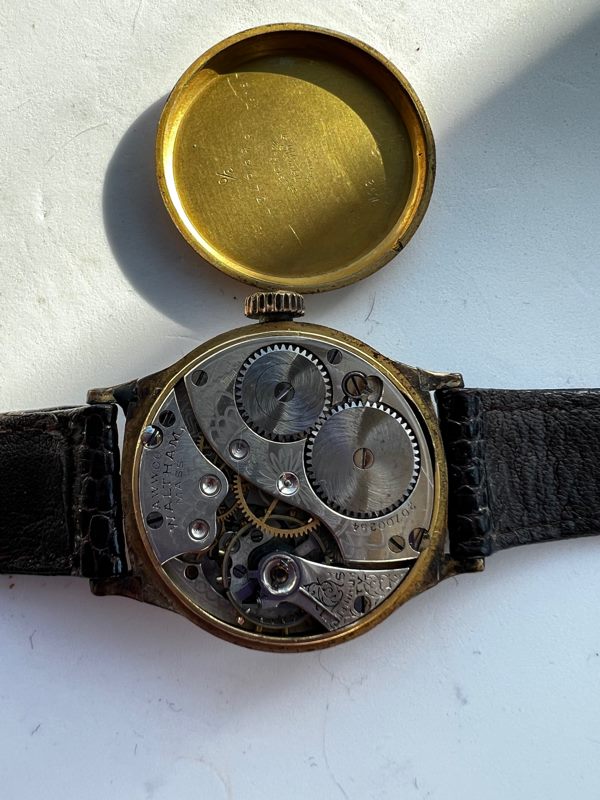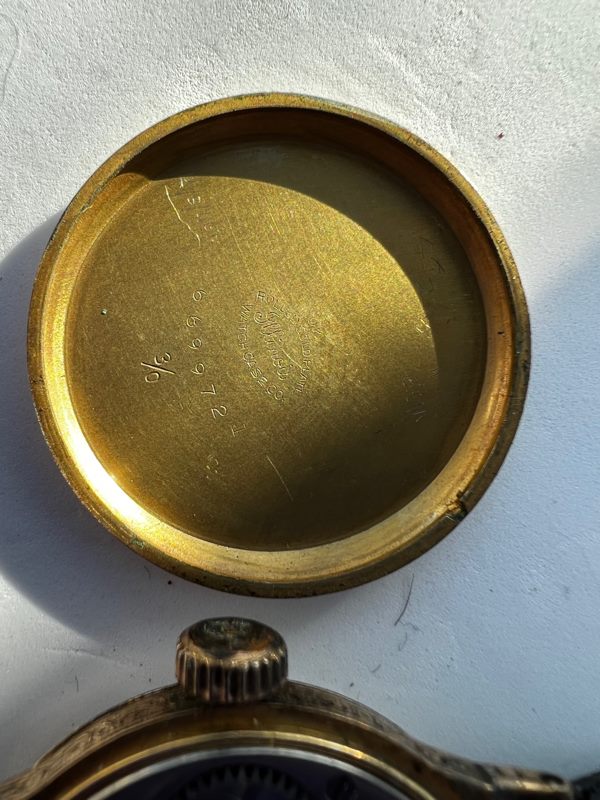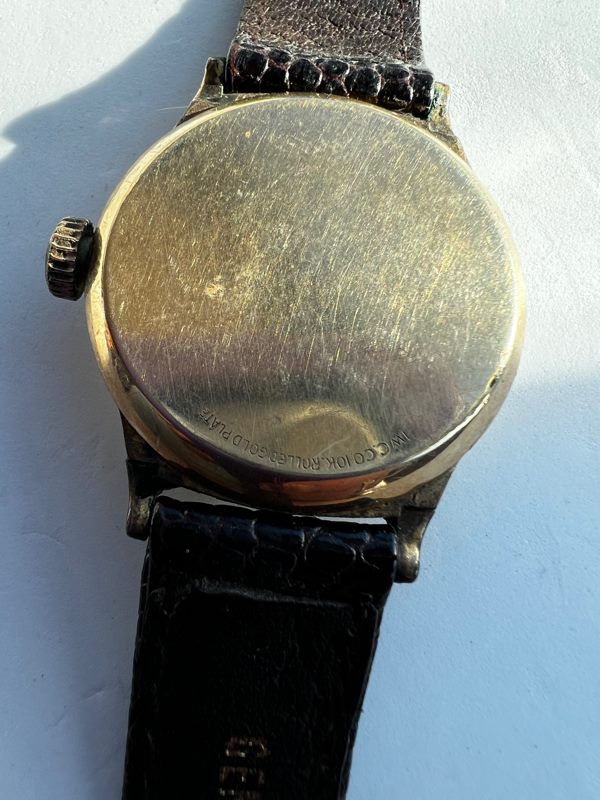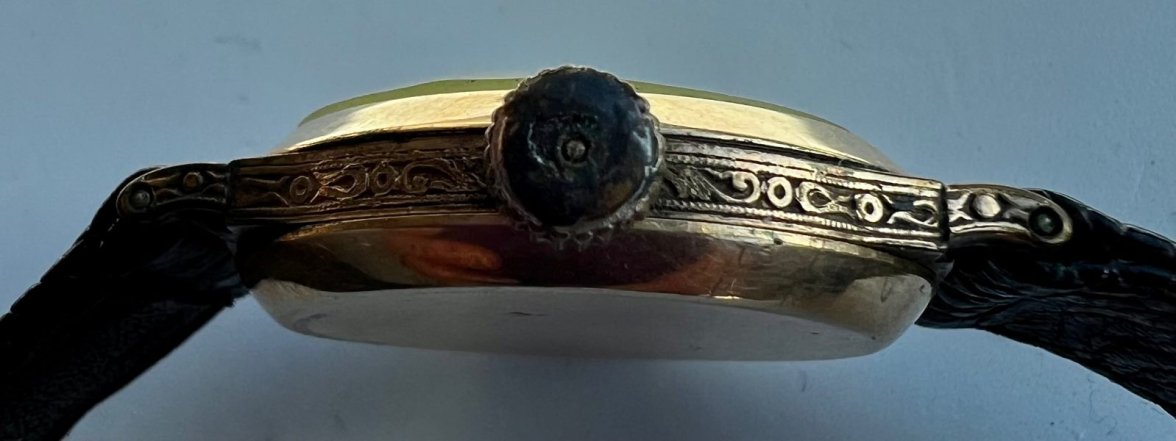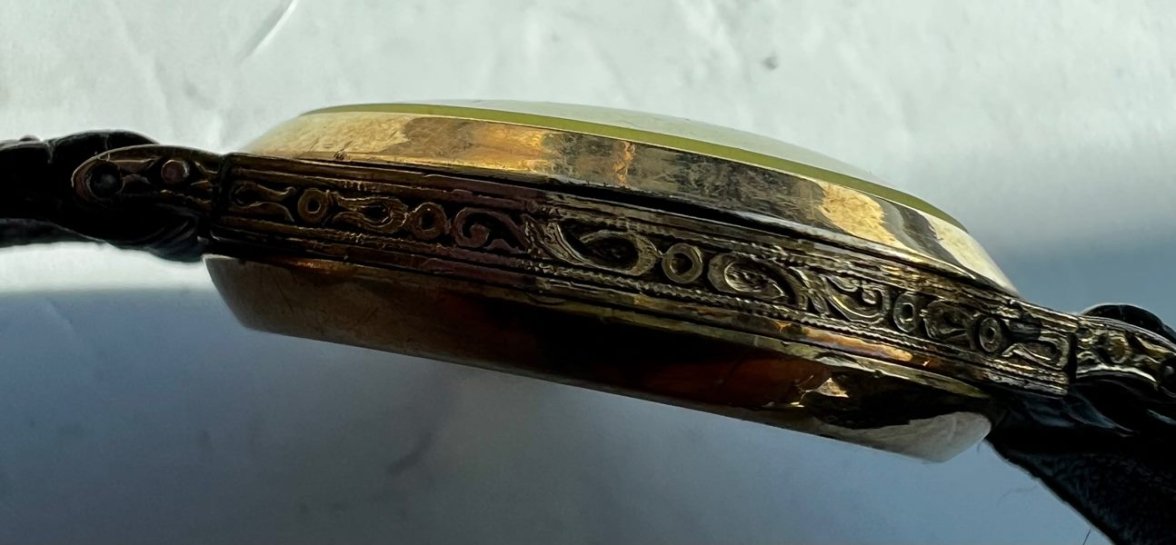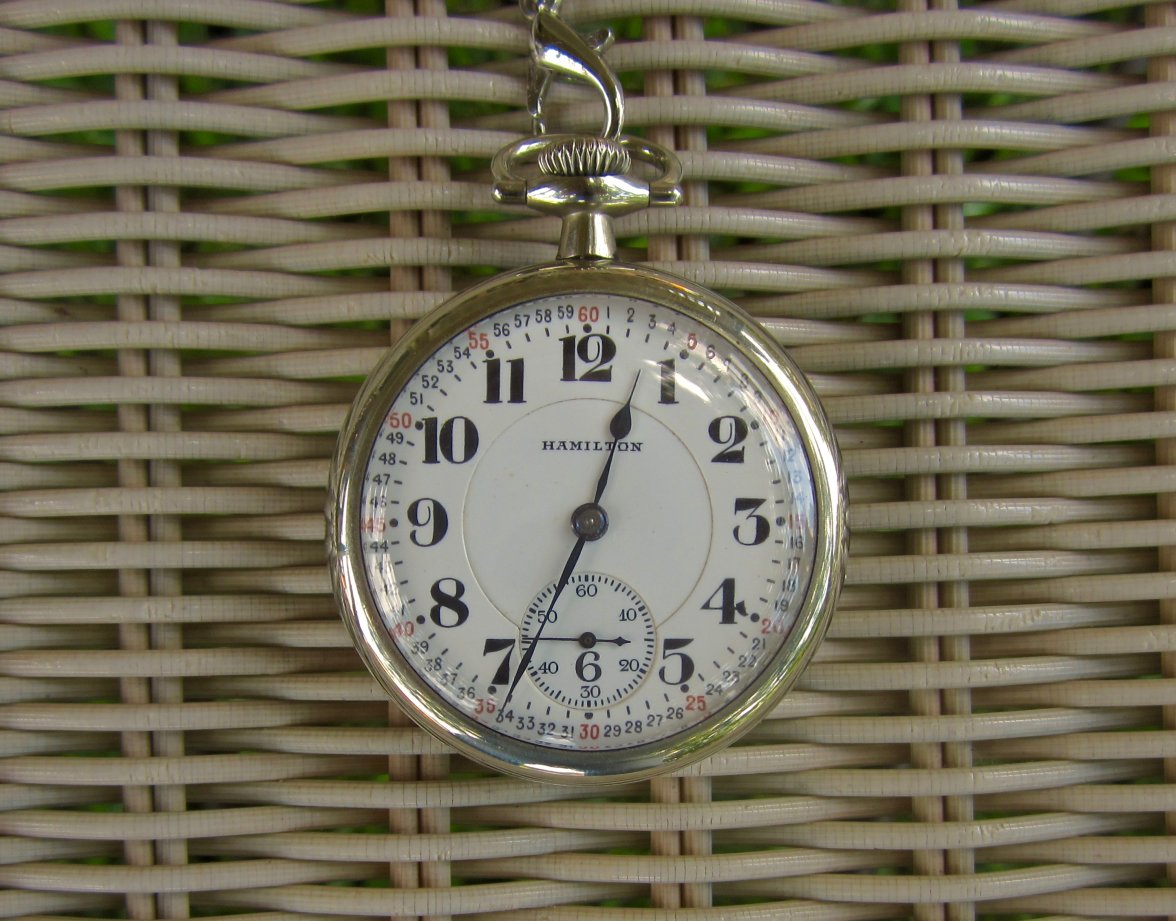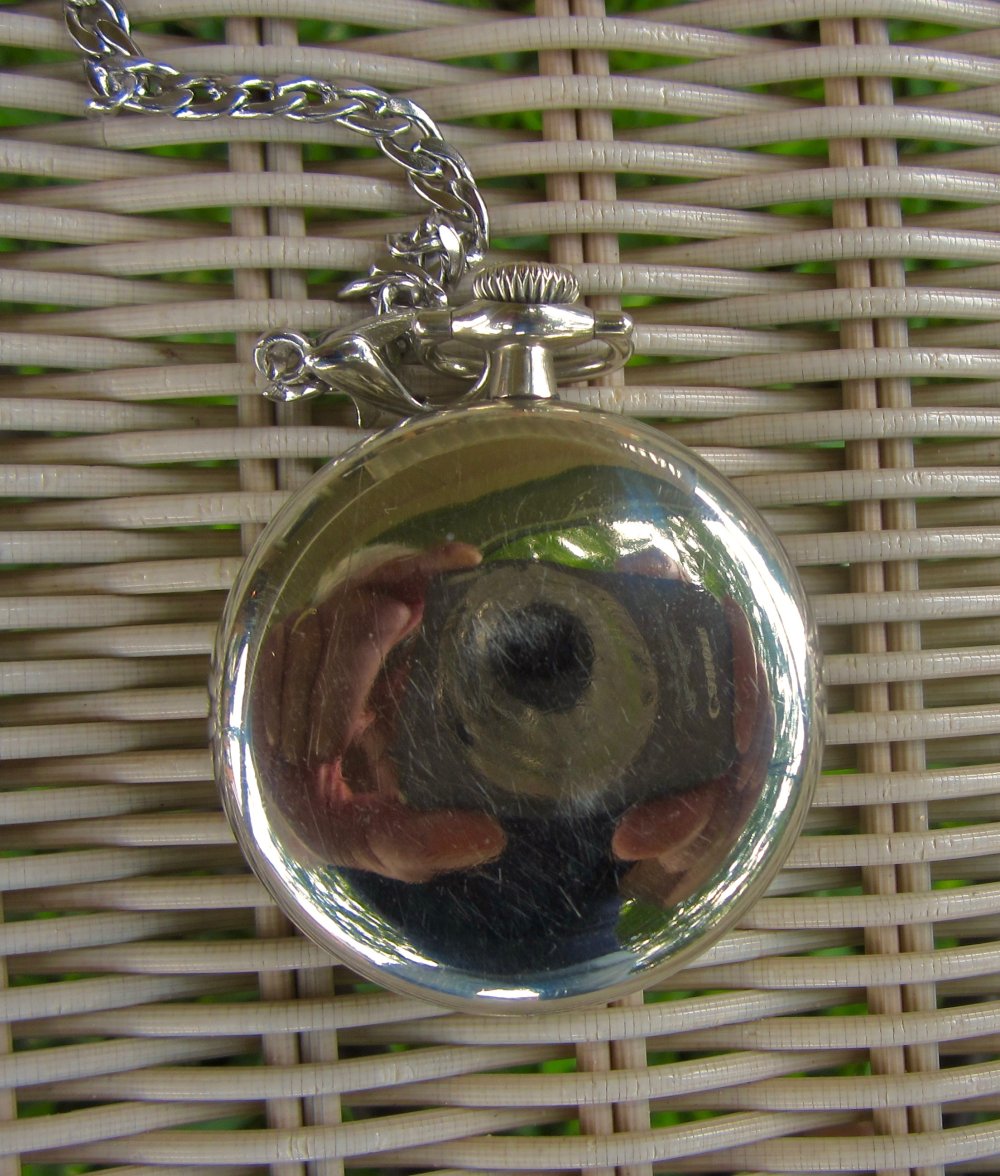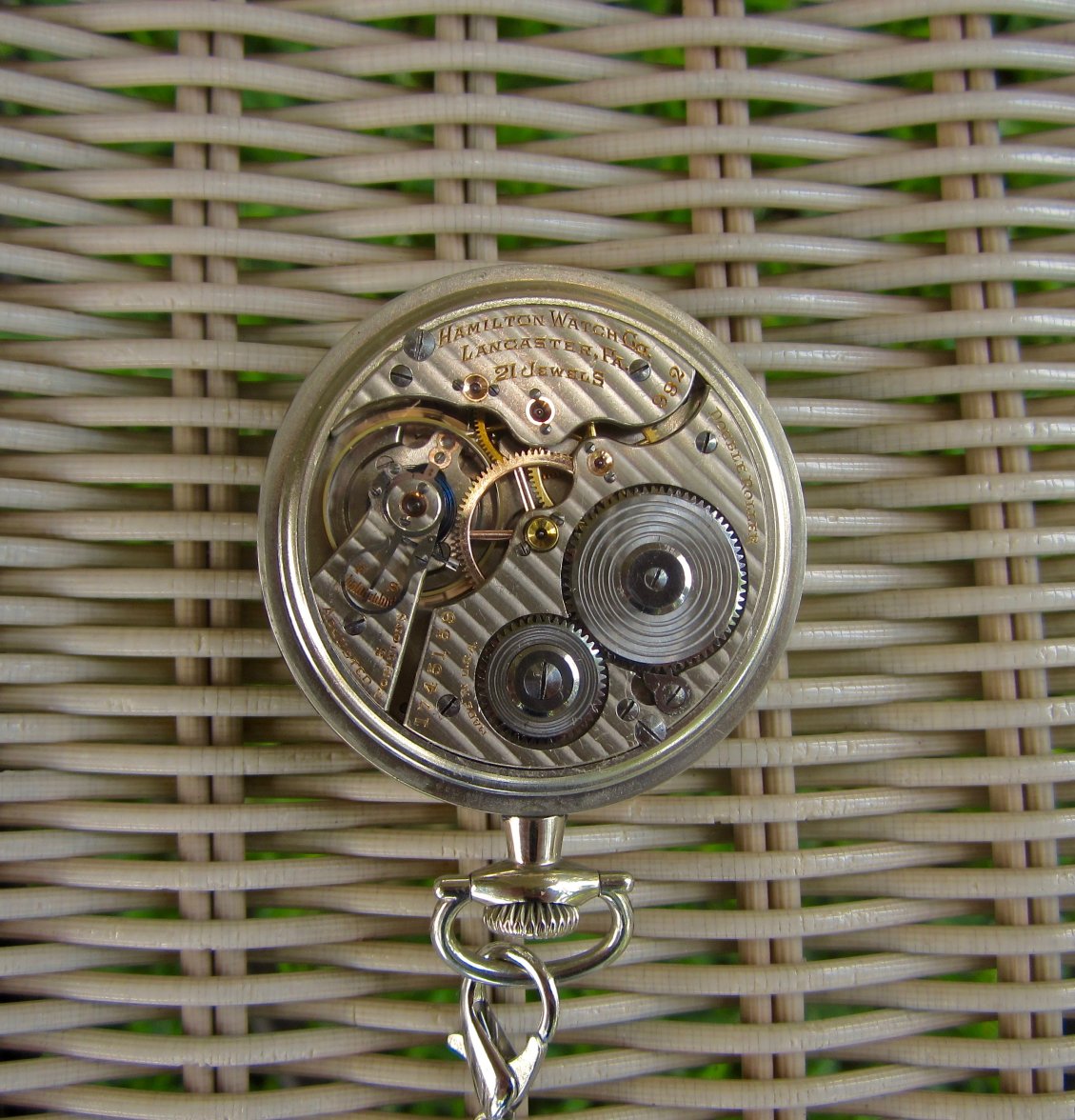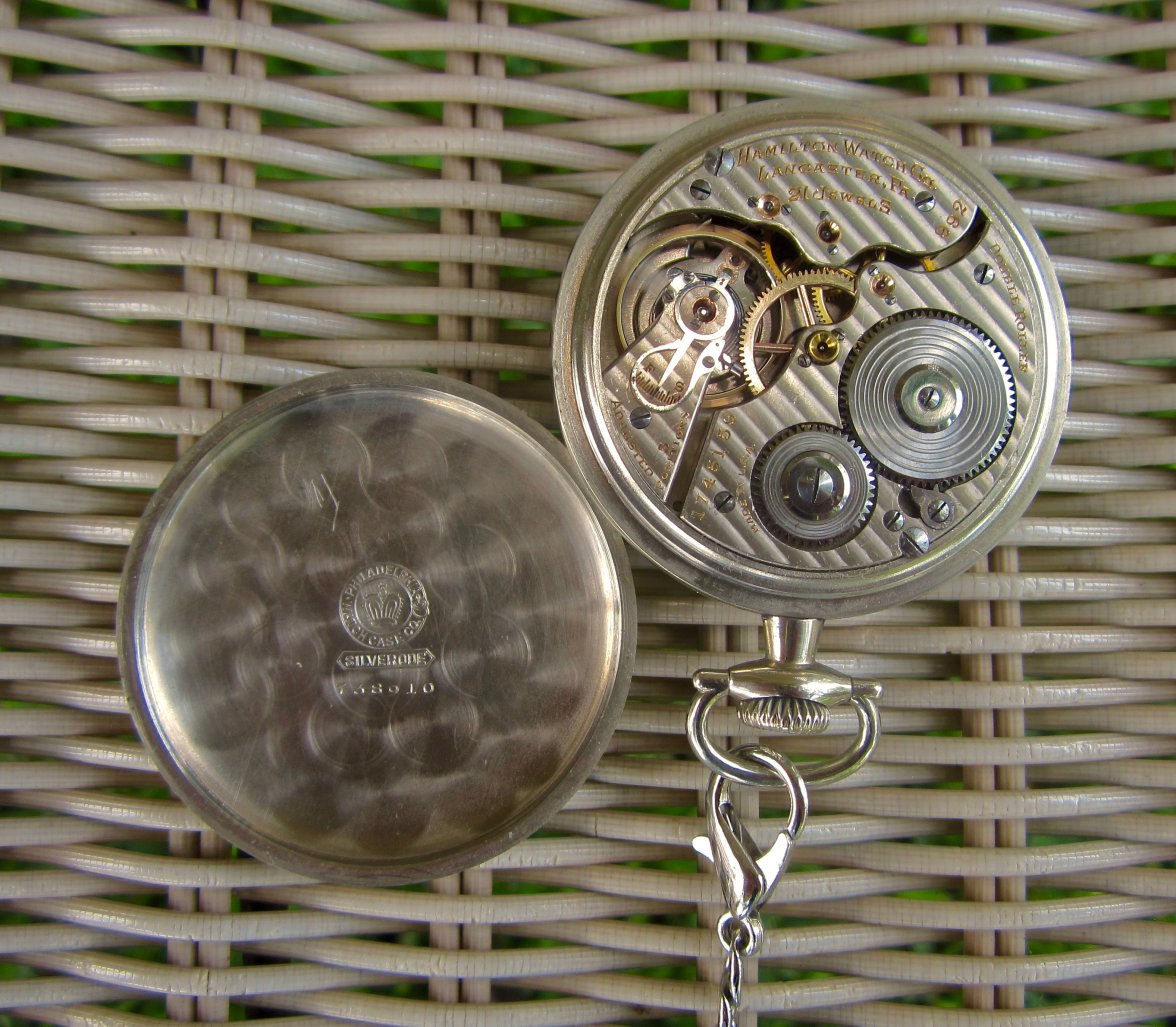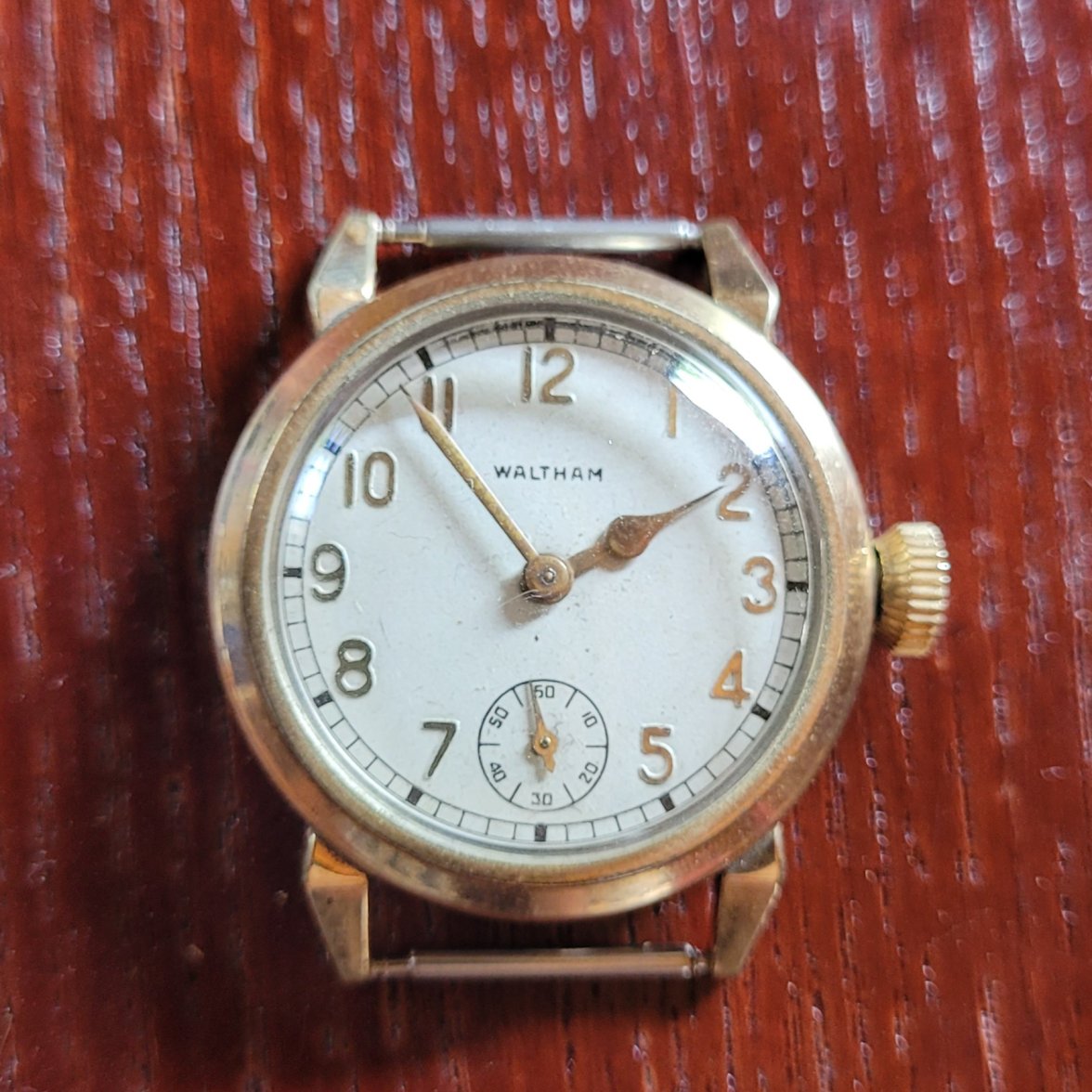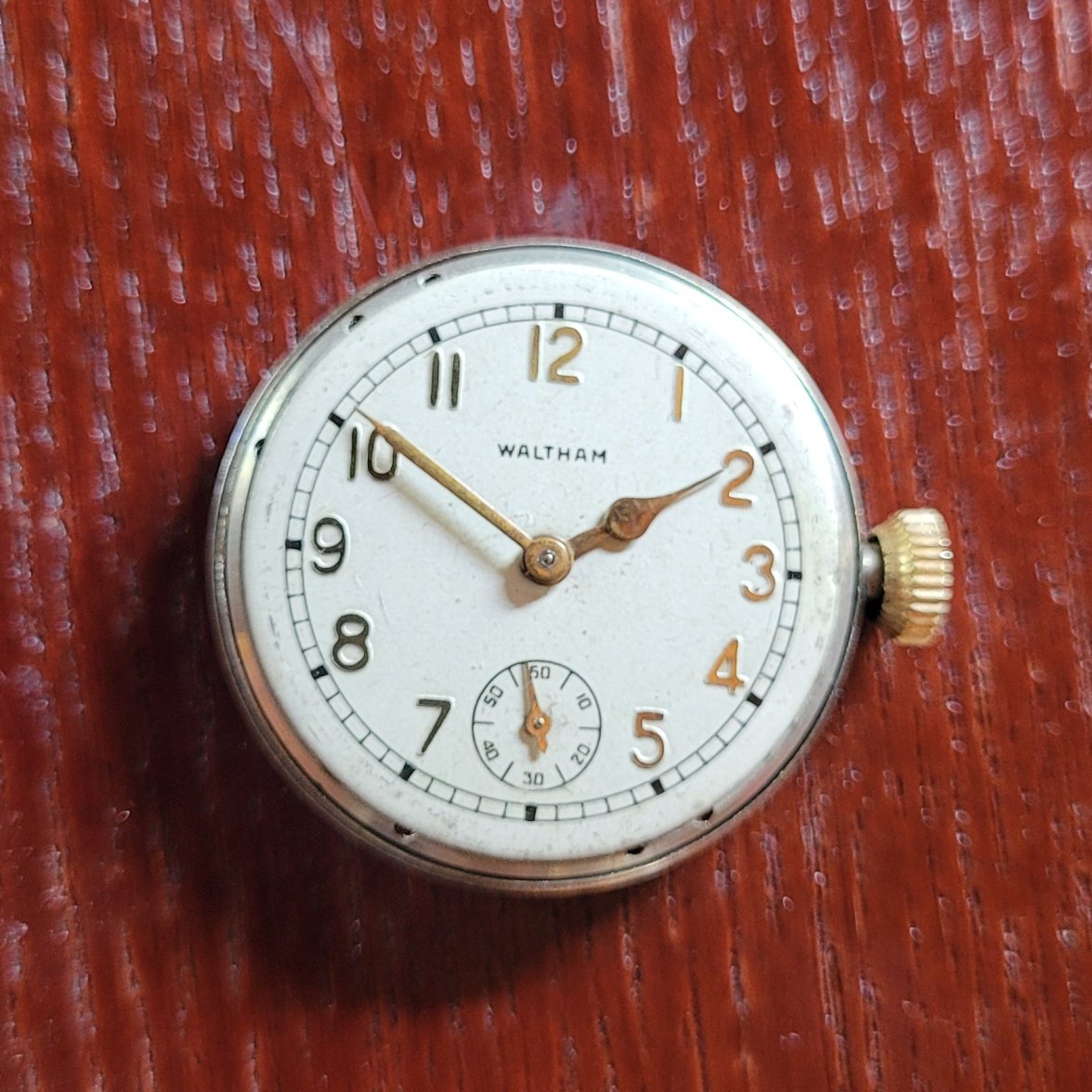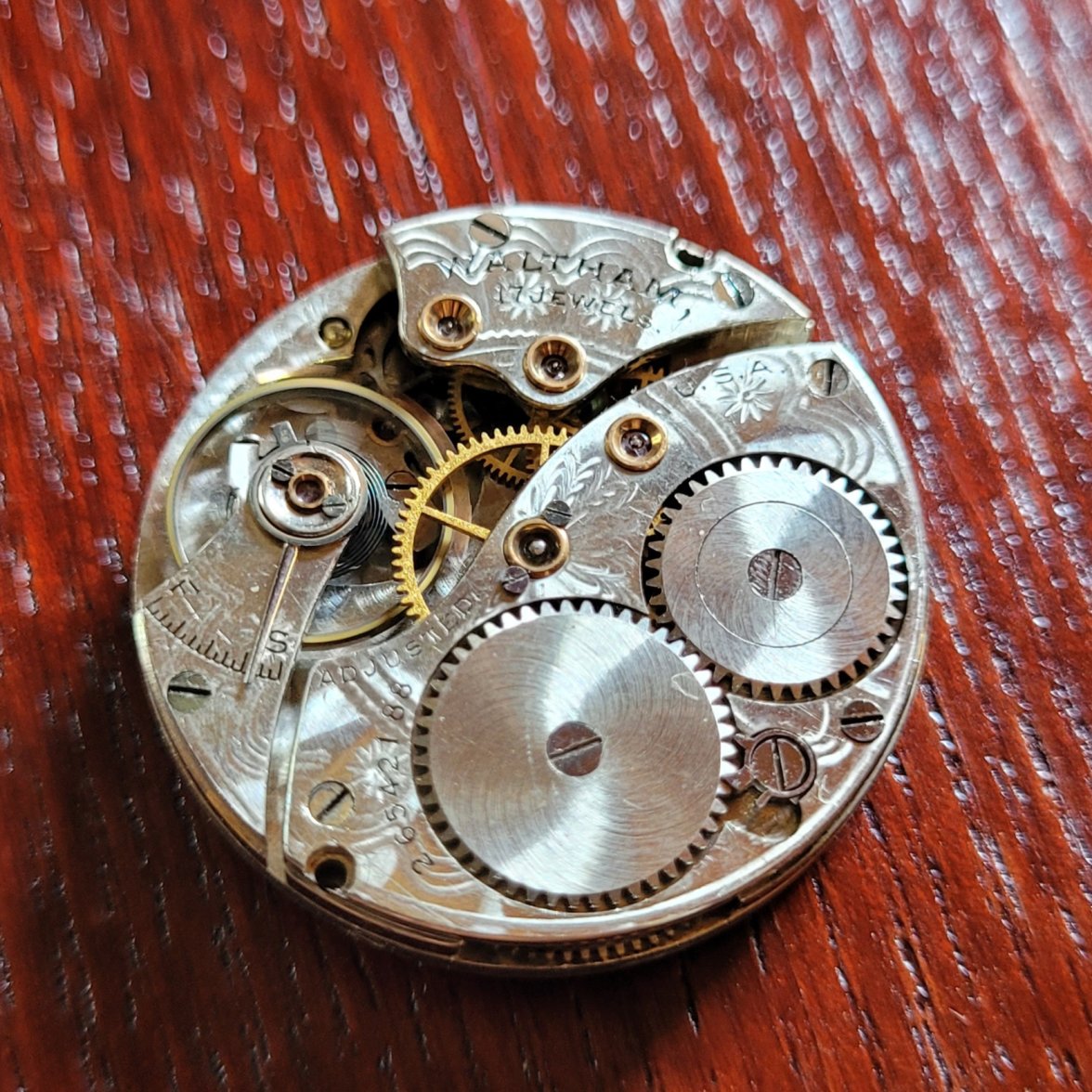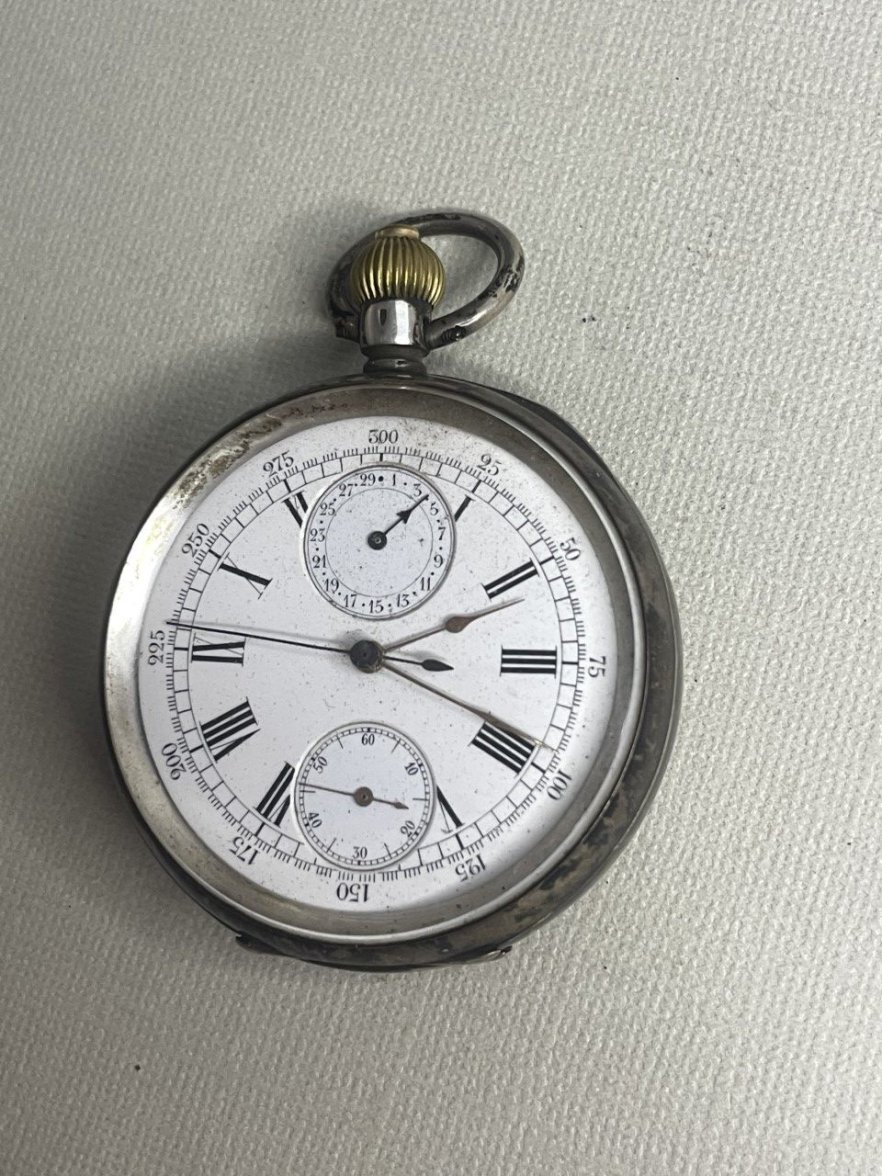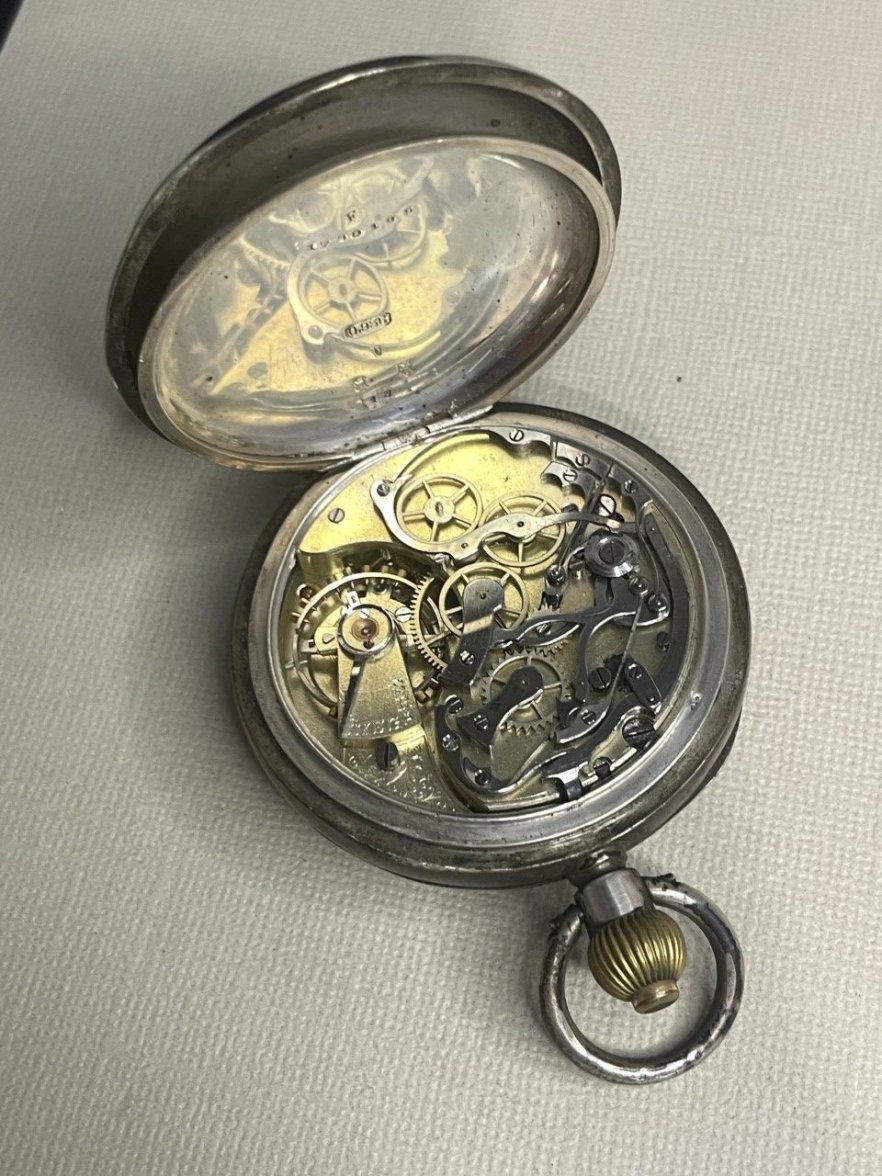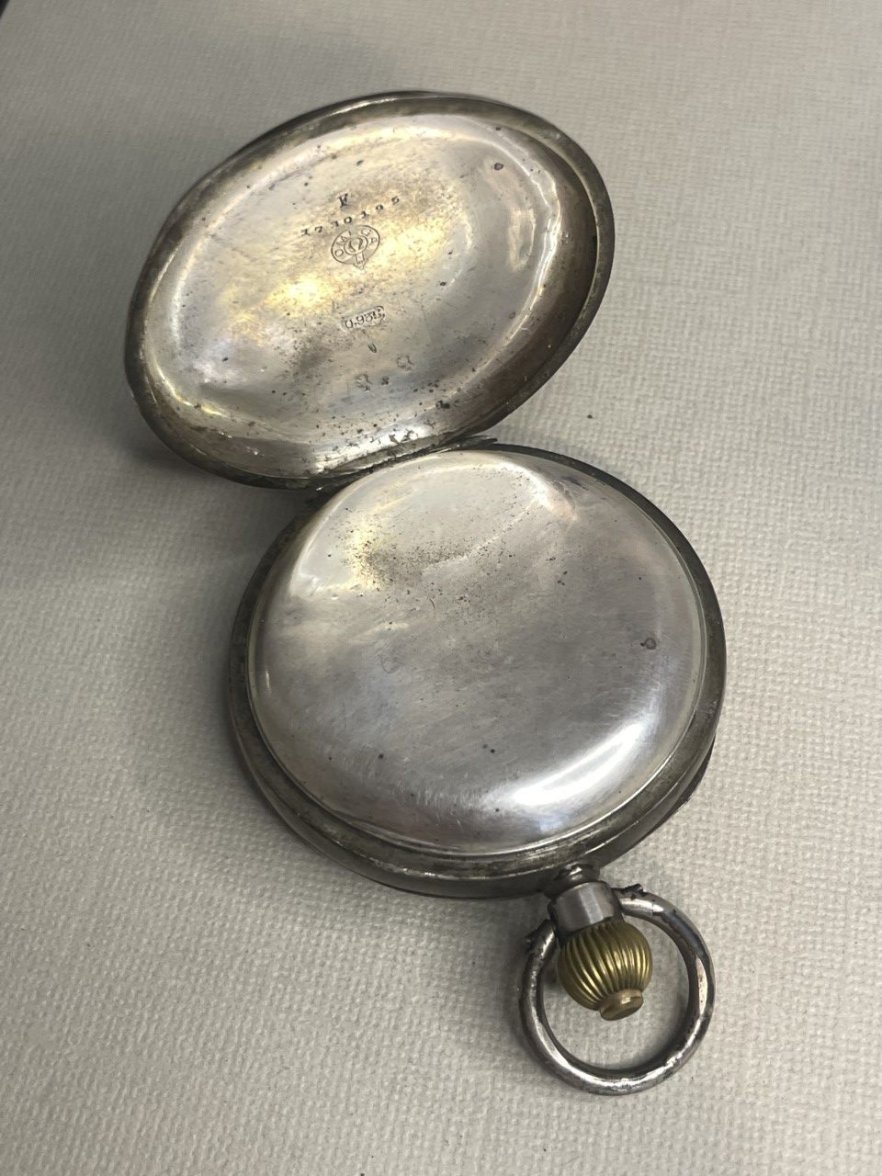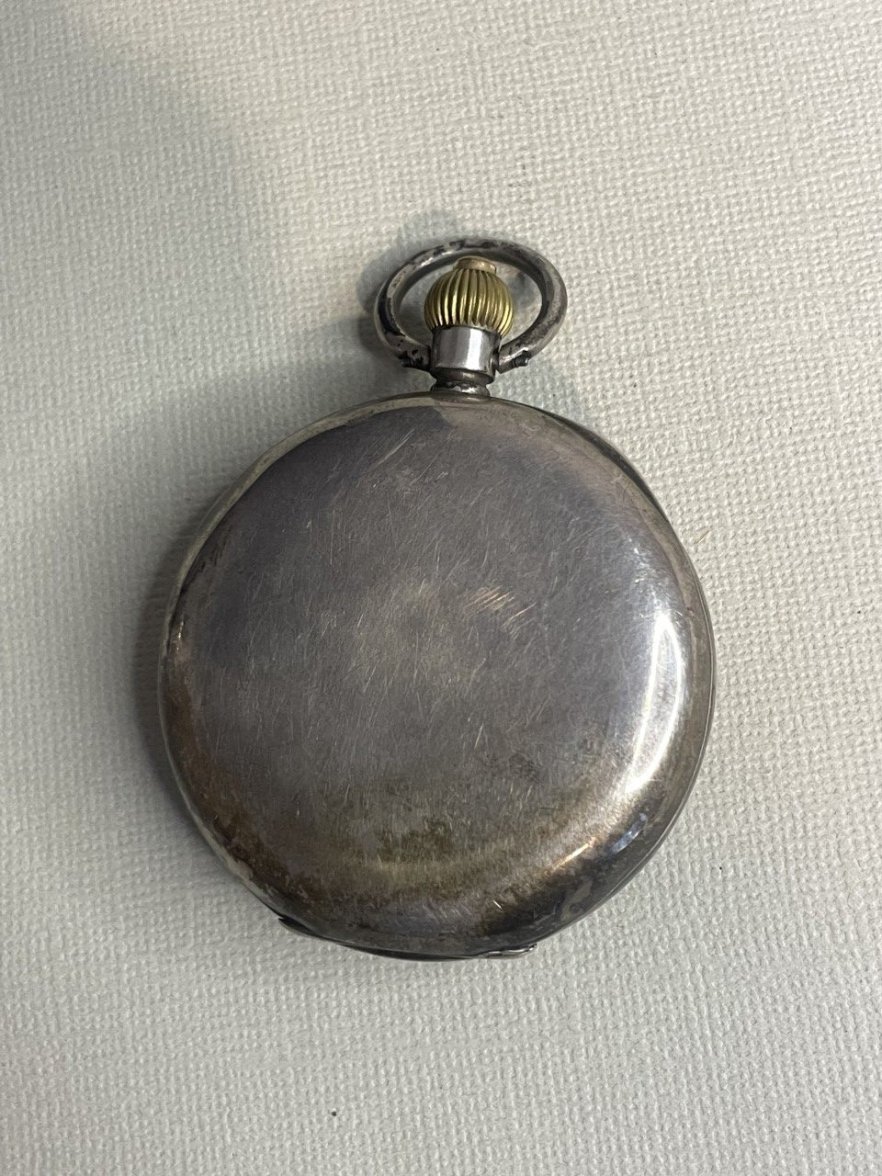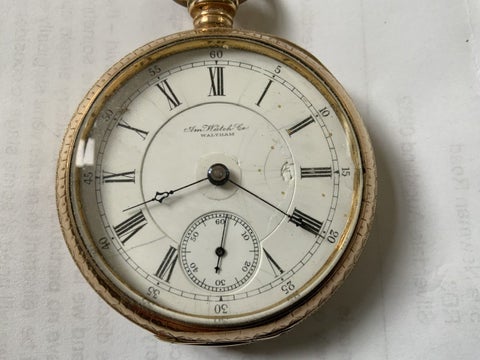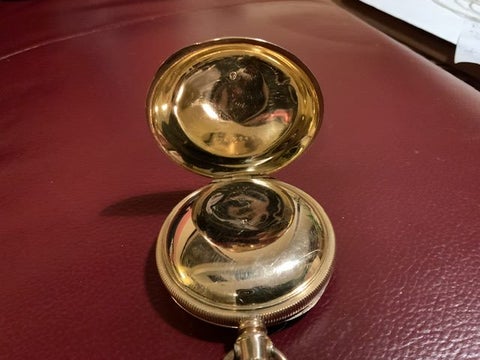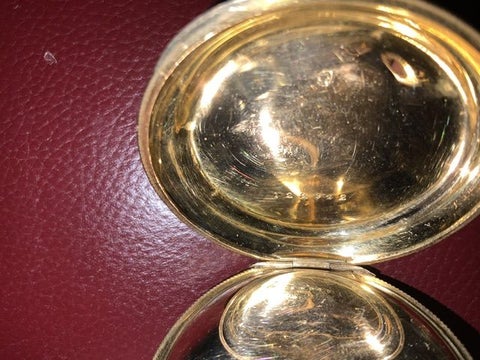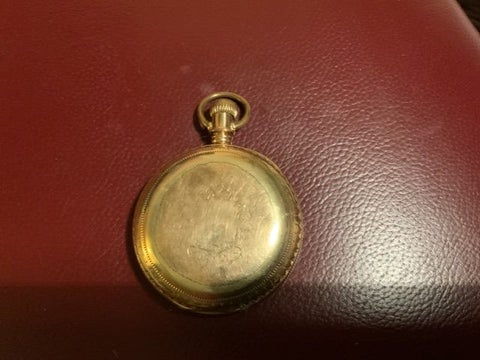The case is stamped .935. Sterling silver is .925. The .935 marking was only used by the Swiss, on silver watch cases destined for Great Britain. This information from the
vintagewatchstraps.com information on Swiss precious metal hallmarks.
.
935 silver
The British 1887 Merchandise Marks Act allowed the British Customs to accept silver items hallmarked in their country of origin, so long as they were at least of sterling standard fineness. The Swiss Act of 1880 recognised only 0.800 and 0.875 silver as legal standards in Switzerland, and these were the only standards that could be hallmarked in Switzerland. This presented Swiss case makers with a problem, because neither of these was legal in Britain.
This lead to the legalisation in Switzerland in December 1887 of a fineness 0·935 (93.5% fine silver) for hallmarking of silver watch cases destined to be exported to Britain.
The apparently higher fineness of 0.935 over the minimum of 0.925 required for sterling was used because Swiss assays allowed a tolerance so that an item that assayed slightly below the nominal fineness could still be hallmarked, which was not allowed on British assays. The nominal standard of 0.935 gave a margin to ensure that a Swiss watch case marked 0.935 would pass a British assay as 925 sterling.
The Swiss Bureaux de Contrôle were authorised to mark
three rampant bears, one small and two large, on silver items that assayed 0·935 fineness within the normal allowed tolerance.
In 1890 the use of three bears was made optional for hallmarking watch cases of 0·935 fineness. Such cases could then be stamped with either three bears or a single large bear at the manufacturer's request. Sometimes cases of 0·935 fineness which also have the German half moon and crown mark are seen with two bears, one large and one small. This was probably so that they were consistent with the
two squirrels marked on 14 carat gold cases with the German sun and crown mark.
The standard of 0·935 was introduced to comply with the British legal standard of sterling silver, signified by the “lion passant”. For more about this see the section below about
935 Silver and the Three Bears.
